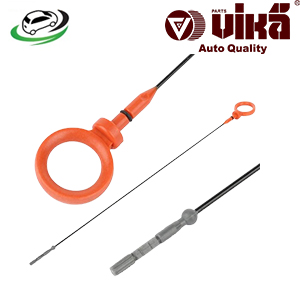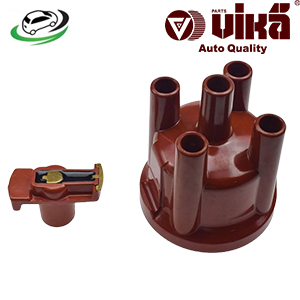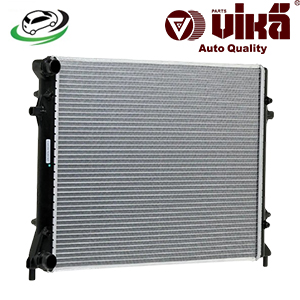-16%
Get Engine radiator Audi A3 8P Quattro V6 3.2L/ Audi TT MKII Quattro 3.2L / VW EOS 3.2L/ Passat B7 V6/ R32 MKV 3.2 5K0121251AB
The engine radiator is a critical component in a vehicle’s cooling system. It plays a pivotal role in regulating engine temperature, ensuring the engine operates efficiently and preventing it from overheating. Overheating can lead to severe engine damage, so the radiator’s function is vital to the longevity and performance of any internal combustion engine. In this detailed exploration, we will cover the function, construction, types, importance, common issues, and maintenance of the engine radiator.
Function of the Engine Radiator
The engine radiator is designed to perform several essential functions within a vehicle’s cooling system:
- Heat Dissipation:
- The primary role of the radiator is to dissipate the heat absorbed by the engine coolant as it circulates through the engine block. The coolant absorbs heat from the engine, preventing it from overheating. As the hot coolant flows through the radiator, the radiator cools it down by transferring the heat to the air that flows through its fins.
- Maintaining Optimal Engine Temperature:
- The radiator helps maintain the engine’s temperature within a specific range, ensuring optimal performance. An engine that runs too hot or too cold can experience efficiency loss, increased emissions, and, in extreme cases, mechanical failure.
- Preventing Overheating:
- By effectively cooling the engine, the radiator prevents the engine from overheating, which can cause serious damage such as warping of engine components, head gasket failure, or even complete engine seizure.
- Supporting Climate Control:
- In vehicles with air conditioning, the radiator works alongside the condenser to regulate the temperature of the coolant and refrigerant, aiding in the overall climate control system of the vehicle.
Construction of the Engine Radiator
The engine radiator is composed of several key components, each designed to enhance its ability to dissipate heat efficiently:
- Core:
- Design: The core is the central part of the radiator where the heat exchange occurs. It consists of a series of thin tubes that carry the coolant and are surrounded by fins that increase the surface area for heat dissipation.
- Material: Most radiator cores are made from aluminum due to its lightweight and excellent heat transfer properties. However, copper and brass are also used in some radiators for their superior thermal conductivity.
- Tubes:
- Function: The tubes within the core carry the coolant through the radiator. As the hot coolant passes through these tubes, the heat is transferred to the fins and then dissipated into the air.
- Design: Radiator tubes can be flat or oval in shape to maximize surface area and improve heat exchange. They are usually made from aluminum or copper.
- Fins:
- Function: Fins are thin, metal sheets attached to the tubes. They increase the surface area of the radiator, enhancing its ability to dissipate heat. The fins allow more air to pass over the tubes, improving cooling efficiency.
- Design: Fins are typically made from aluminum and are arranged in a dense pattern to optimize airflow and heat transfer.
- Tanks:
- Design: The tanks are located on either side of the core and serve as reservoirs for the coolant. They direct the flow of coolant into and out of the radiator.
- Material: Radiator tanks are usually made from plastic or aluminum. Plastic tanks are more common in modern vehicles due to their cost-effectiveness and lightweight properties, but aluminum tanks are more durable and resistant to cracking.
- Inlet and Outlet:
- Function: The inlet and outlet are the points where the coolant enters and exits the radiator. The inlet is usually positioned near the top of the radiator, allowing the hot coolant to flow down through the core, while the outlet is located at the bottom, where the cooled coolant is drawn back into the engine.
- Design: These components are designed to ensure a smooth flow of coolant and are often fitted with hoses that connect to the engine’s cooling system.
- Radiator Cap:
- Function: The radiator cap is a pressure-release valve that controls the pressure within the cooling system. It allows coolant to flow into the overflow tank when the pressure exceeds a certain level, preventing the radiator from being damaged by excess pressure.
- Design: The cap is typically designed to maintain a specific pressure within the system, usually between 12-15 psi, which raises the boiling point of the coolant and prevents it from boiling over.
Types of Engine Radiators
Radiators can vary based on their design, materials, and the specific needs of different vehicles:
- Crossflow Radiators:
- Design: In crossflow radiators, the coolant flows horizontally from one side of the radiator to the other. This design allows for a lower overall height of the radiator, making it suitable for vehicles with limited vertical space in the engine bay.
- Applications: Crossflow radiators are commonly used in modern vehicles where space constraints require a more compact design.
- Downflow Radiators:
- Design: In downflow radiators, the coolant flows vertically from the top of the radiator to the bottom. This design is typically found in older vehicles and is effective in vehicles with ample vertical space in the engine compartment.
- Applications: Downflow radiators are often used in classic cars, trucks, and larger vehicles where space is not a primary concern.
- Single-Pass Radiators:
- Design: In a single-pass radiator, the coolant flows through the core only once before exiting the radiator. This design is simple and effective for most standard applications.
- Applications: Single-pass radiators are suitable for most passenger vehicles and light trucks.
- Dual-Pass Radiators:
- Design: In a dual-pass radiator, the coolant flows through the core twice before exiting. This design increases the time the coolant spends in the radiator, improving cooling efficiency.
- Applications: Dual-pass radiators are commonly used in high-performance and racing vehicles where enhanced cooling is required.
- Triple-Pass Radiators:
- Design: Similar to the dual-pass radiator, the triple-pass radiator allows the coolant to pass through the core three times. This design maximizes heat transfer and is used in extreme performance applications.
- Applications: Triple-pass radiators are typically used in racing cars and high-performance vehicles where maximum cooling is necessary.
Importance of the Engine Radiator
The engine radiator is crucial for the overall performance and longevity of the vehicle:
- Preventing Overheating:
- The radiator is the primary component responsible for preventing the engine from overheating. By dissipating heat from the coolant, it ensures that the engine remains within a safe operating temperature range. Overheating can lead to engine failure, making the radiator essential for engine protection.
- Maintaining Engine Efficiency:
- An engine that operates at an optimal temperature is more efficient. The radiator helps maintain this temperature, ensuring that the engine runs smoothly and efficiently, which can lead to better fuel economy and reduced emissions.
- Protecting Engine Components:
- Excessive heat can cause significant damage to engine components such as the pistons, cylinders, and head gasket. By preventing overheating, the radiator helps protect these critical components, extending the engine’s lifespan.
- Supporting Other Systems:
- The radiator also plays a role in the proper functioning of other systems, such as the air conditioning and transmission cooling systems. In some vehicles, the radiator is integrated with these systems, making it even more crucial for overall vehicle operation.
Common Issues with Engine Radiators
Despite their durability, radiators can experience several common issues that can affect their performance:
- Leaks:
- Leaks are one of the most common problems with radiators. They can occur due to corrosion, physical damage, or failure of the seals and gaskets. A leaking radiator can cause a loss of coolant, leading to overheating and potential engine damage.
- Clogs:
- Over time, debris, dirt, and sludge can accumulate in the radiator, leading to clogs. Clogged radiators reduce the coolant flow, diminishing the radiator’s ability to dissipate heat and causing the engine to overheat.
- Corrosion:
- Radiators, especially those made from metals like aluminum or copper, are susceptible to corrosion. Corrosion can weaken the radiator’s structure, leading to leaks and reduced heat transfer efficiency.
- Broken or Damaged Fins:
- The fins on the radiator are delicate and can be easily damaged by debris, road salt, or improper handling. Damaged fins reduce the radiator’s surface area, impairing its ability to dissipate heat effectively.
- Radiator Cap Failure:
- A faulty radiator cap can cause pressure problems within the cooling system. If the cap fails to maintain the correct pressure, it can lead to coolant loss, overheating, and potential damage to the radiator and engine.
Maintenance of the Engine Radiator
Proper maintenance of the radiator is essential to ensure it functions efficiently and lasts as long as possible:
- Regular Inspections:
- Regularly inspect the radiator for any signs of leaks, corrosion, or damage. Check the coolant level frequently, and ensure that the radiator cap is functioning properly.
- Coolant Flush:
- Over time, the coolant can become contaminated with debris, rust, and other particles. Performing a coolant flush according to the manufacturer’s recommendations can help remove these contaminants and prevent clogs and corrosion.
- Cleaning the Radiator:
- Clean the radiator’s exterior to remove dirt, debris, and bugs that can block airflow through the fins. This can be done using a soft brush or a low-pressure hose. Be gentle to avoid damaging the fins.
- Replacing Damaged Components:
- If any part of the radiator is damaged, such as the fins, hoses, or the radiator cap, it should be replaced immediately to prevent further issues. Regular maintenance and prompt repairs can significantly extend the life of the radiator.
- Monitor Coolant Quality:
- Use the correct type of coolant as recommended by the vehicle manufacturer. Check the coolant’s condition regularly; if it appears dirty or has particles floating in it, it may be time for a flush and refill.
- Follow us on Facebook for more parts.



